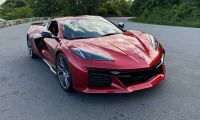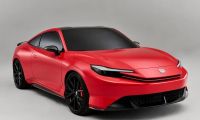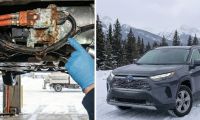Tesla Crash on S.F. Bay Bridge
We have a video of a crash on the S.F. (San Francisco) Bay Bridge where a Tesla Model S came to a quick stop and an 8 car crash ensued. Was this car using Tesla FSD or Autopilot and was that the cause of the crash?
Tesla FSD and Autopilot are level 2 systems which means the driver of the vehicle is completely responsible for monitoring the vehicle and making sure to take over if anything goes wrong.
There appears to be no way to know if FSD or Autopilot was in use at the time of the crash. Dirty Tesla has been using FSD Beta for over 2 years and Autopilot for another 2 years and there is a difference between each of those systems.
Autopilot is simply lane keep and speed keep. It's like cruise control but a little more advanced. Enhanced Autopilot is Autopilot with the ability for the vehicle to change lanes on the highway. It's pretty close to FSD but just for the highway. FSD Beta is Tesla's software that has the car drive anywhere - whether it be the freeway or on city roads. The car will honor stop signs, stop lights, and drive anywhere.
You may also be interested in:
- The staggering economics of the Tesla semi.
- Tesla Model S Plaid review after 20,000 miles.
- Tesla Model Y Should Be 7 Seater Only
Who Was At Fault?
These systems have to be enabled. In the case of this set of road, the road is a freeway and that would have been Tesla Autopilot. The car is cautious and can go a little bit slow. For the car to do a lane change, it will do a turn signal 6 times before changing lanes. If a vehicle is in the way, it won't make the lane change. If the driver initiates the lane change, then the car will move over after just a couple blinks.
This rules out Tesla FSD Beta - because this is a stretch of road that Autopilot uses and the software stacks have not been combined yet.
Could phantom braking be the problem here? It is more common for a Tesla vehicle to slow down when it shouldn't. If your foot is on the accelerator, you can simply tap the accelerator and the car will continue and you are in control.
Dirty Tesla's opinion is that the car started to change lanes and then completely slowed down pretty quick. The car behind the Model S rear ended it and was driving very close behind the car. Several of the cars behind were also driving way too close. Most of the time, if you rear end someone, you are going to be at fault.
This car could have been using Autopilot. The system is level 2 and the driver of the car could have taken over at any time. The car didn't slam on the brakes. It gradually slowed down on the road. The people behind weren't paying attention and should have been able to stop in time if they were at a safe following distance.
In my opinion, the driver of the Model S should have been able to prevent the slowing down and kept going even if Tesla Autopilot was being used. The drivers behind this vehicle, if they were at a safe following distance should have been able to react and slow down appropriately. There are two sets of people at fault here.
It will be important to know if Tesla Autopilot was active here so if there is an issue, it can be resolved. Tesla probably has data at the time of this crash for this vehicle and should be able to say whether Autopilot was engaged or not.
To summarize, the driver was at fault for not taking over his level 2 driving system. Tesla makes it clear with FSD and Autopilot that you must be able to take over at any time. Also, the drivers behind were following way too close and didn't slow down in time and are also at fault.
Who do you think was at fault here? Was Tesla Autopilot to blame or the driver of the Model S?
For more information, see this video from Dirty Tesla:
In Related News: Tesla FSD Finishes 2022 With 285K Users
Leave your comments below, share the article with friends and tweet it out to your followers.
Jeremy Johnson is a Tesla investor and supporter. He first invested in Tesla in 2017 after years of following Elon Musk and admiring his work ethic and intelligence. Since then, he's become a Tesla bull, covering anything about Tesla he can find, while also dabbling in other electric vehicle companies. Jeremy covers Tesla developments at Torque News. You can follow him on Twitter or LinkedIn to stay in touch and follow his Tesla news coverage on Torque News.











